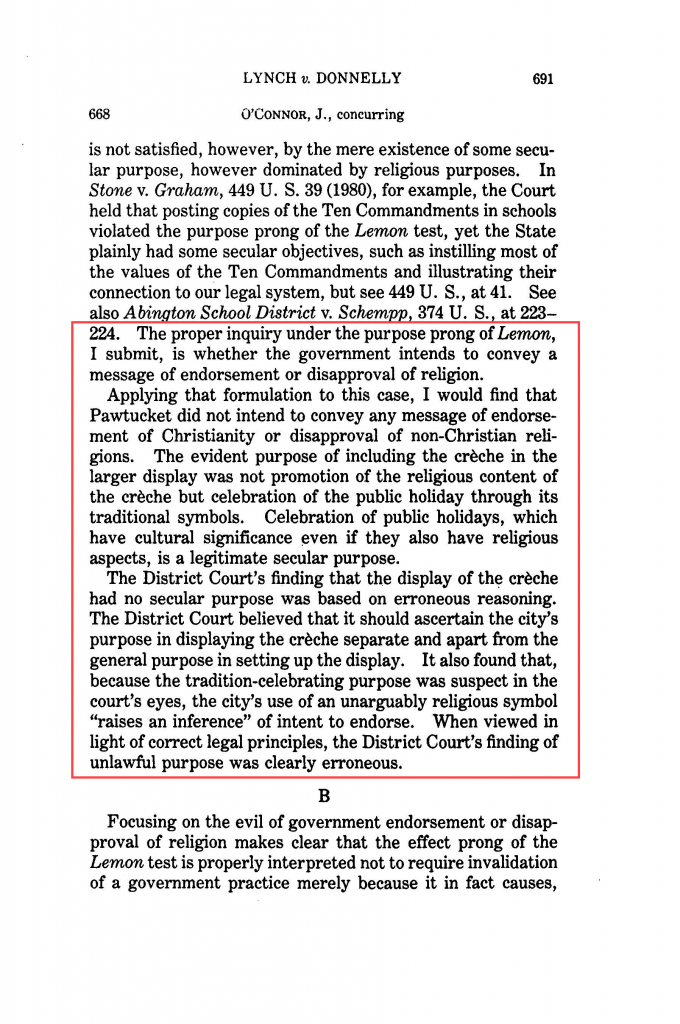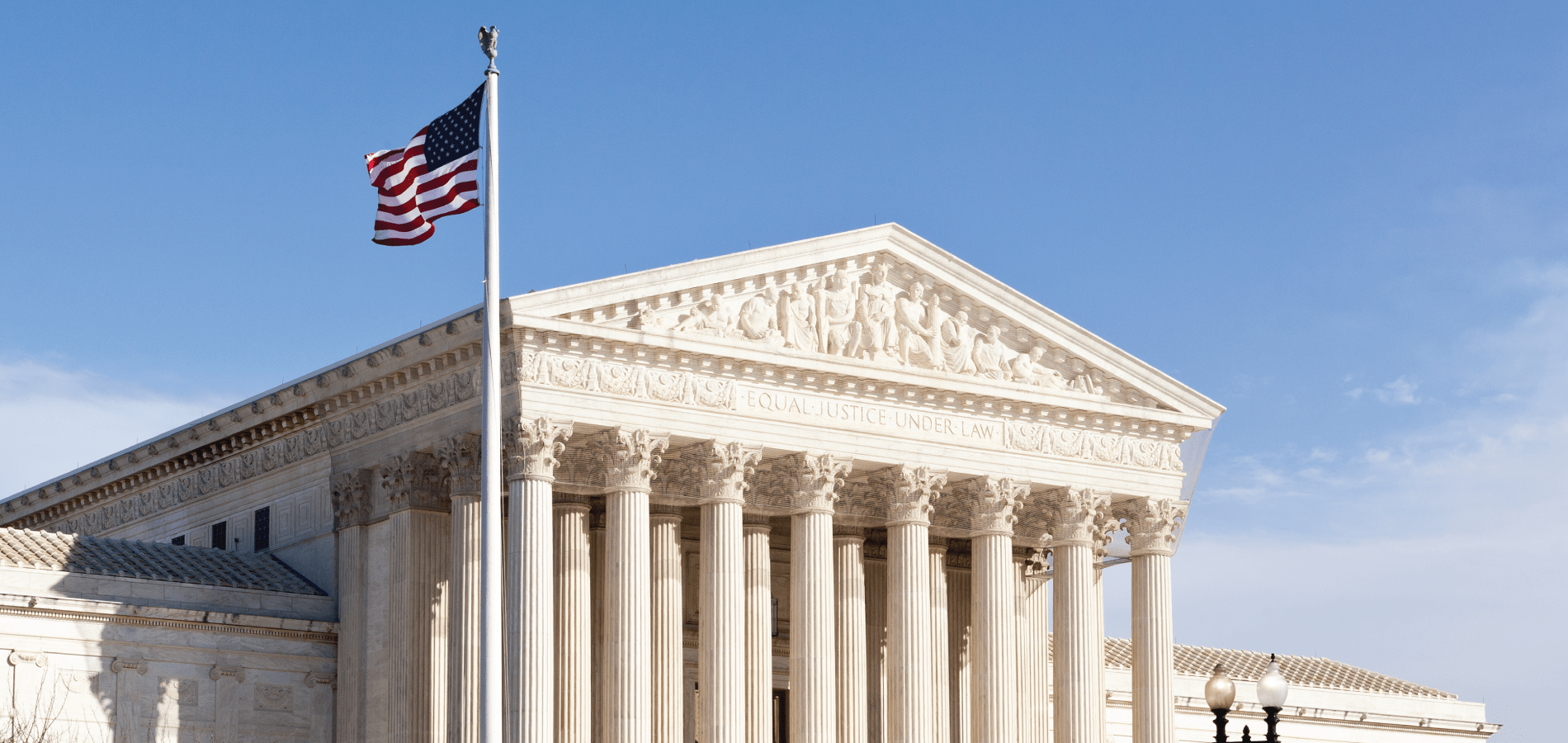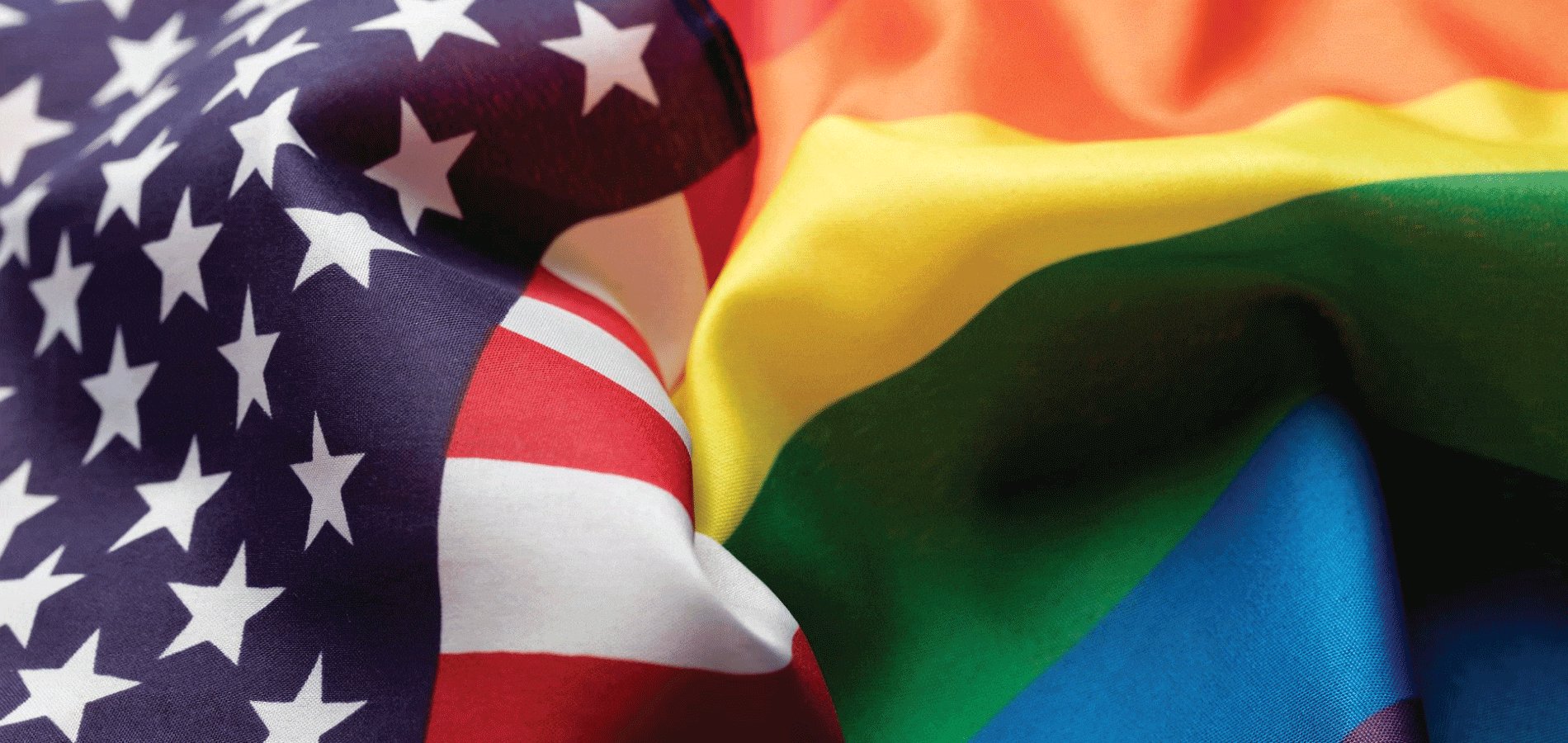Last month, on Thanksgiving Day, the U.S. Supreme Court ruled that New York State could not place attendance limits on places of worship in areas of the state that had been designated as coronavirus hot spots. The rules drafted by Governor Andrew Cuomo had stated that areas of the state designated as orange zones could have no more than 25 people attend each service; in areas designated as a red zone, that cap was at 10 people. Citing interference with the First Amendment’s guarantee of religious liberty, the current ruling by the Court reversed its position from earlier this year, when it upheld similar attendance limits enacted in California and Nevada.
The holiday season usually brings up discussions of the First Amendment, cries of interference and discrimination, and askance glances at nativity scenes installed on town hall lawns. Using HeinOnline, let’s clear up some of this Christmastime confusion and see what the Supreme Court has to say on the constitutionality of these displays of cheer.
The Best(?) Way to Spread Christmas Cheer
Most Americans are familiar with the phrase “separation of church and state,” even if they are unsure of the phrase’s provenance or exact meaning. The words “separation of church and state” do not appear in the U.S. Constitution; however, the First Amendment’s Establishment Clause, which reads, “Congress shall make no law respecting an establishment of religion, or prohibiting the free exercise thereof,” is often interpreted to imply a separation between government and religion.
The phrase “separation of church and state” and its intertwining with the Establishment Clause are a perennial fodder for scholars. Its entrance into the American lexicon probably has its genesis in an 1802 letter from Thomas Jefferson in which the founding father wrote:
Believing with you that religion is a matter which lies solely between man and his God, that he owes account to none other for his faith or his worship, that the legislative powers of government reach actions only, and not opinions, I contemplate with sovereign reverence that act of the whole American people which declared that their legislature should ‘make no law respecting an establishment of religion, or prohibiting the free exercise thereof,’ thus building a wall of separation between Church and State.
The practical application of Jefferson’s wall has appeared before the Supreme Court many times, and in turn the Court has established several guidelines or tests to help determine whether cracks have been put in the separation wall. The 1971 case Lemon v. Kurtzman centered around laws in Rhode Island and Pennsylvania that allowed the Superintendent of Public Schools to give tax-funded reimbursement to church-affiliated schools to cover teacher salaries and textbooks. Ruling that they violated the First Amendment’s Establishment Clause, the Court’s decision established the “Lemon test” to help determine if an act would be considered constitutional under the Establishment Clause. The Lemon test prescribes that “the statute must have a secular legislative purpose; second, its principal or primary effect must be one that neither advances nor inhibits religion … finally, the statute must not foster ‘an excessive government entanglement with religion’.”
Not without its own controversy, the Lemon test has been modified by the Court and joined by other tests to evaluate whether an Establishment Clause violation has occurred. It is in one of these other tests that Rudolph entered the courtroom.
The Santa Clause
So let’s return to the Nativity scene set up in a public park or lighting up the courthouse lawn for the month of December. Under the Establishment Clause, how are these displays permissible? Residents of Pawtucket, Rhode Island, asked the same of the city’s annual Christmas display set up in a public park in Pawtucket’s shopping district. It was not Santa Claus’ house or the reindeer pulling his sleigh, the Christmas tree, or the “Season’s Greetings” banner that brought the display into the purview of the courts; it was the Nativity scene, or crèche, that prompted the First Amendment suit. For included in the display for forty years was a Nativity, owned by the city, consisting of Mary, Joseph, baby Jesus and his attendant angels, wise men and animals. The Nativity was determined by the District Court and Court of Appeals to be a violation of the Establishment Clause.
The Supreme Court, however, ruled differently. In his opinion, Chief Justice Burger referenced the Court’s ruling in Lemon that the Establishment Clause’s purpose is to “prevent, as far as possible, the intrusion of either [the church or the state] into the precincts of the other,” but that such distinctions are not nearly as neat or practical as Jefferson’s wall metaphor would purport, pointing out that in the same week Congress originally approved the Establishment Clause, it also passed legislation for paid Congressional Chaplains and that both Christmas and Thanksgiving are federal holidays. Because the city’s display included other, non-religious Christmas decorations, and was not solely a Nativity, the Nativity’s inclusion served merely to “depict the origins of that Holiday” and that it was done in a secular manner with no agenda.
In a concurring opinion, Justice O’Connor looked at the Lemon test and how the lower courts had misapplied its tenets, advising that “focusing on institutional entanglement and on endorsement or disapproval of religion clarifies the Lemon test.” Now known as the “endorsement test,” O’Connor wrote:

I Like the Christmas Jesus Best
Five years after Lynch, the endorsement test appeared again before the Court in County of Allegheny v. American Civil Liberties Union, again with a controversy over a Nativity scene. As had been the case in Lynch, Allegheny concerned two long-recurring holiday displays, this time in downtown Pittsburgh. The first controversy before the Court concerned a Nativity scene (crèche), donated by the Holy Name Society, that stood on the grand staircase of the Allegheny County Courthouse, an angel above the manger bearing a banner that read Gloria in Excelsis Deo (Glory to God in the highest). The second display at issue stood outside the City-County Building, and it consisted of an 18-foot Hanukkah menorah and a 45-foot Christmas tree with a sign at its base bearing the mayor’s name and the words “salute to liberty.” While the city of Pittsburgh did not own the menorah, they placed, removed, and stored it each year.
The Court’s opinion is spread across six parts, with the Court divided both on which displays were constitutional and the legal reasonings that should be used to arrive at that decision. Ultimately, the majority held that the Nativity violated the Establishment Clause while the menorah did not, but the Justices disagreed on the particular legal principles that should be applied. Justice Harry Blackmun’s majority opinion looked back at the crèche in Lynch for comparison. Because the crèche now before the Court was so overtly religious, even sectarian, and because it stood alone in the most prominent part of the courthouse, “the county sends an unmistakable message that is supports and promotes the Christian praise to God that is the crèche’s religious message.”

The menorah, on the other hand, grouped with symbols of a secular holiday season, particularly the much-larger Christmas tree, was ruled constitutional because “the combination of the tree and the menorah communicates, not a simultaneous endorsement of both the Christian and Jewish faiths, but instead, a secular celebration of Christmas coupled with an acknowledgment of Chanukah as a contemporaneous alternative tradition.” Whether the menorah survived the purpose or entanglement prongs of Lemon, however, the Court remanded back to the Court of Appeals for consideration.
Justice O’Connor, who joined Blackmun’s ruling, wrote a separate opinion to both defend the endorsement test as attacked by Justice Kennedy in his dissent, and also to offer a different rationale for ruling the mixed Hanukkah display constitutional, a ruling Justice Brennan, Marshall and Stevens disagreed with, although they joined Blackmun in holding the crèche unconstitutional.
Ultimately, among the majority, only Blackmun and O’Connor agreed with each other on the constitutionality of both the crèche and menorah. The rest of the Court disagreed on the constitutionality of one or both displays.
– Kennedyu003cbru003e- Whiteu003cbru003e- Scaliau003cbru003e- Rehnquist
– Blackmunu003cbru003e- O’Connoru003cbru003e- Kennedyu003cbru003e- Whiteu003cbru003e- Scaliau003cbru003e- Rehnquist
– Kennedyu003cbru003e- Whiteu003cbru003e- Scaliau003cbru003e- Rehnquist
– Stevensu003cbru003e- Brennanu003cbru003e- Marshall
Despite the complexity of the decision in Allegheny, the endorsement test is still incorporated as part of the Lemon test by courts today, although, like the Lemon test, its validity and application is a matter of debate.
Cheer to All Whos Far and Near
Whatever you stuff in your stocking, the Hein Blog has a post to give you the brainpower of ten Grinches, plus two. Don’t be a cotton-headed ninny muggins—subscribe to receive posts straight to your inbox and keep the learning festivities going all year long.



